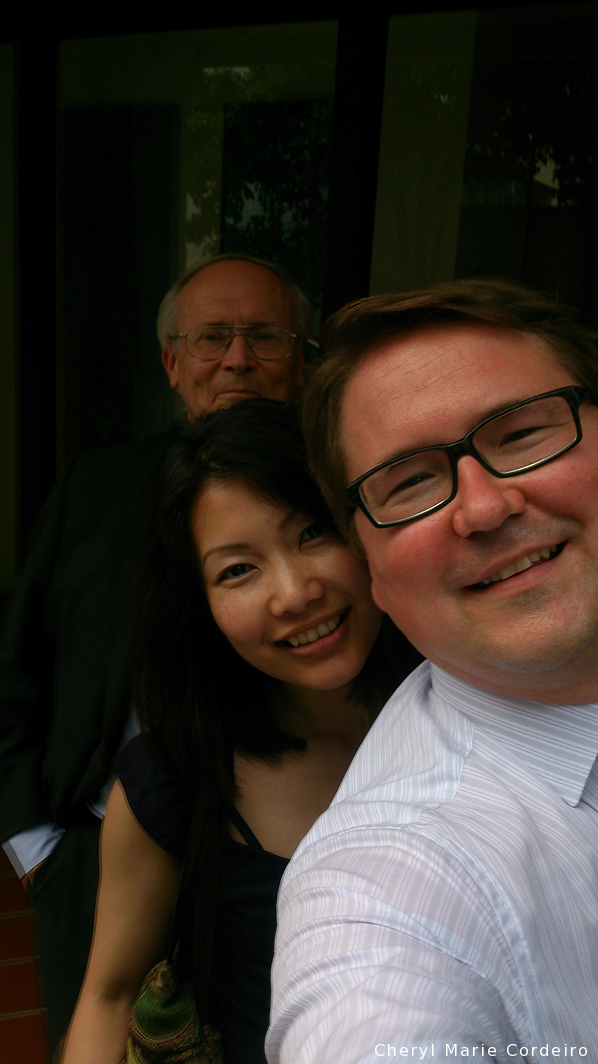
A CIBS ”selfie of the day” at Amoy Street, Singapore.
Text & Photo © P Ström, JE Nilsson, CM Cordeiro 2014
I recently found myself navigating a number of historical streets in and around the central business district of Singapore. If this somehow is an epigenetic memory or not, I don’t know, but I do find myself very much at home around here, it being the very place in Singapore as to where I want to bring my friends.
In Singapore together for this study visit were colleagues from the Centre for International Business Studies (CIBS) of the School of Business, Economics and Law at the University of Gothenburg, Sweden.
Having walked from Philip Street close to the riverfront at Boat Quay and then inland towards Cross Street, we walked through to the end of Amoy Street where it met with Telok Ayer Street. And there at the bottom of the stairs leading up to Ann Siang Hill were some wooden signboards that told of the story of the area.
Despite the swelter of the tropical heat, we found ourselves spending time contemplating the architecture of the pre-war shophouses, and the narrative of Ann Siang Hill Park.
Here in the former outskirts of historical Singapore, rested the memories of failed nutmeg plantations intermingled with successful trading houses shipping raw materials between Europe and China. Here was the location of the remittance houses, Chinese letter writers and the romance of poetry writing caligraphers during the early 1900s. All now cloaked under new paint, being host to a new set of organizations in the modern economy.
Chia Ann Siang himself, was a young merchant who joined a British company trading in timber in the mid-1800s. The clustering effect of these old businesses can still be observed here where companies such as the Swedish Elof Hansson’s Pulp and Paper Singapore office is located, at Club Street.
The interchange of dialogue revolved some around the service industry overtaking the manufacturing industry’s importance as society’s driving force to build wealth and economic growth.
In this, some maintained the view that solid old fashioned manufacturing will remain the most important factor in the economy for a long time to come. Some pointed towards that the knowledge content in most any product is steadily growing and as an example – the iPhone 5 – all immaterial service and knowledge content in the product is above the $8 USD it actually costs to manufacture the product [1].
Both sides do have a point but nowhere in Singapore can the importance, expansion and growth of the knowledge industry be seen as clearly as here, in the heart of Singapore’s business district.
Looking at the types of companies located in the area – Amoy street, is where you want to be – we suggested bright eyed and smiling when we got the question from a Swedish knowledge company, on where next to move their expanding office.
– And why this restaurant? My colleagues asked.
– They’ve got good chocolate cake. They also play classical music in the washroom.
Who wouldn’t fall in love with a café that does that?
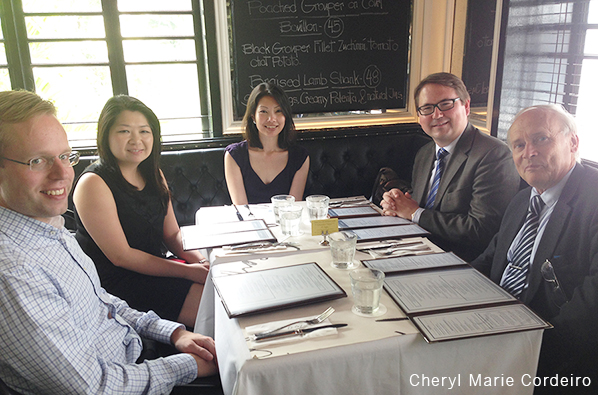
Lunch at PS. Café Ann Siang Hill, Singapore.
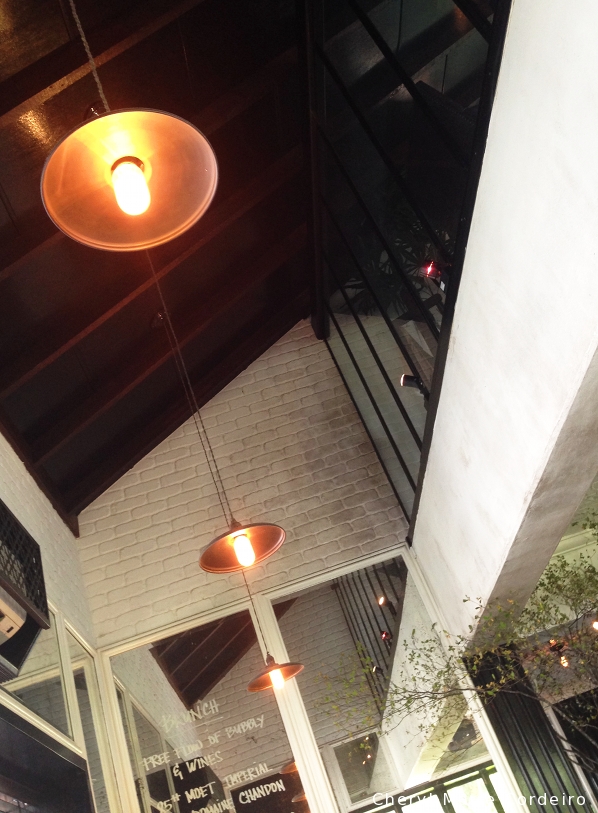
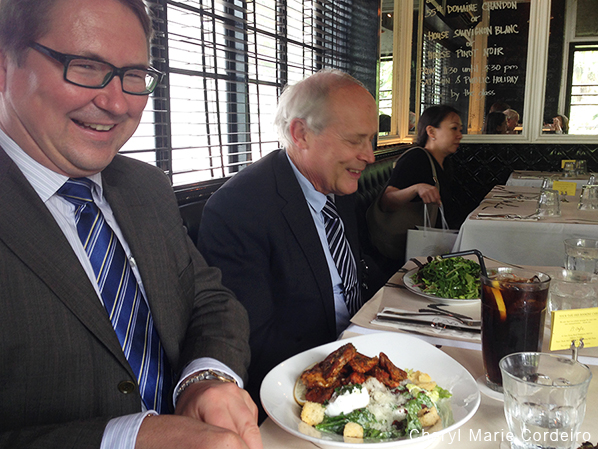


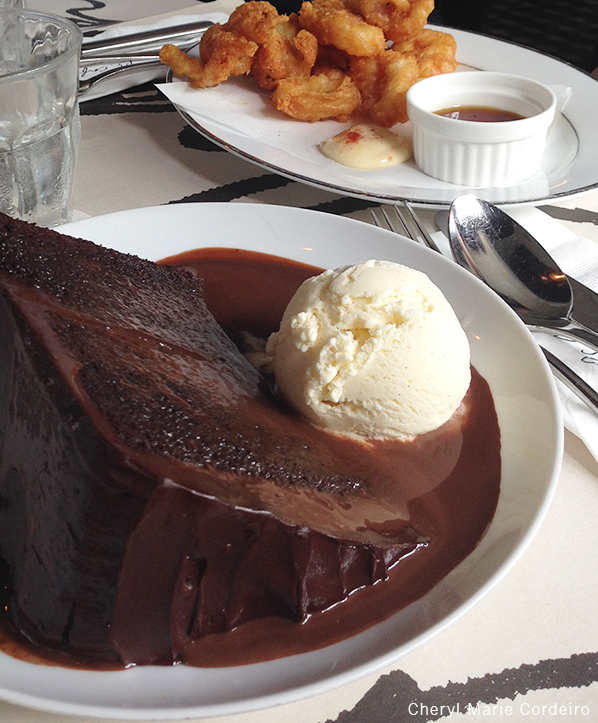
That chocolate cake.
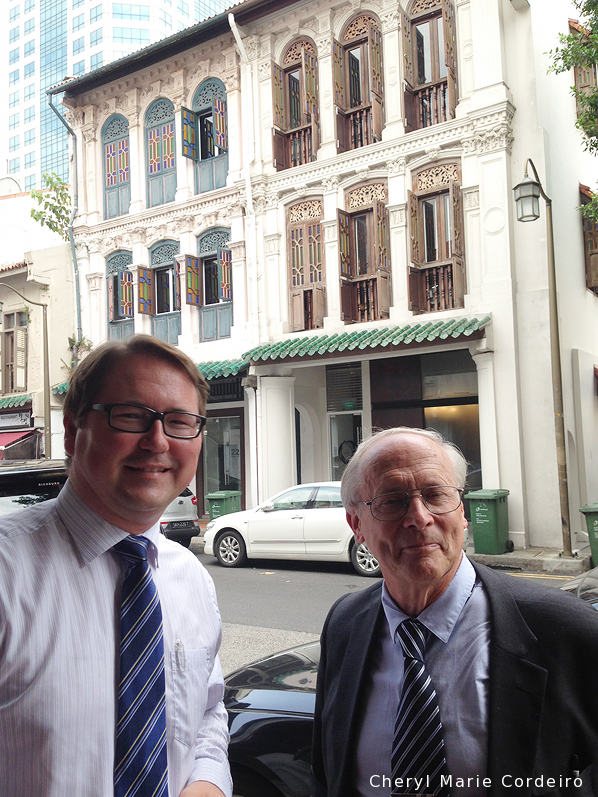
————-
Reference:
[1] Kolakowski, Nick 2012. iPhone 5 Teardown Hints at Apple’s Efficiency, Dice, September 25, 2012. Internet resource at http://bit.ly/10CdohI.